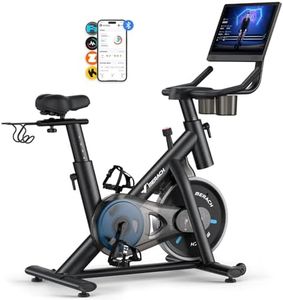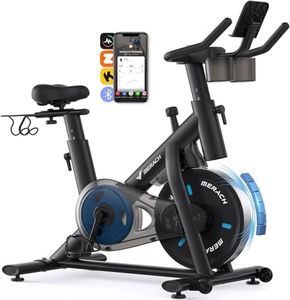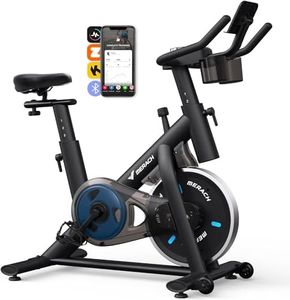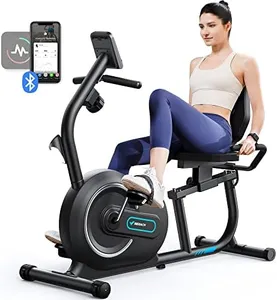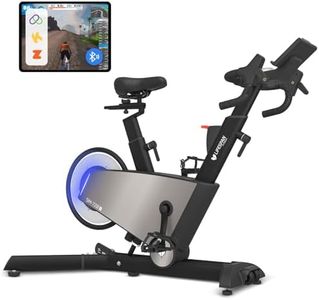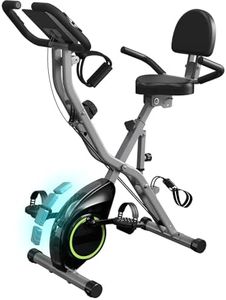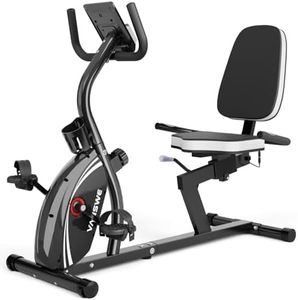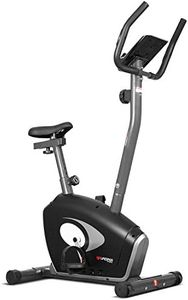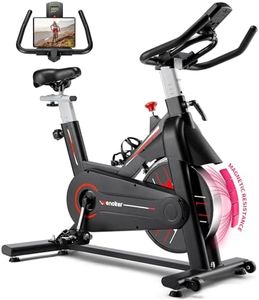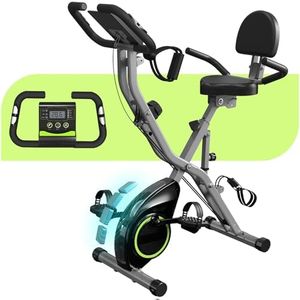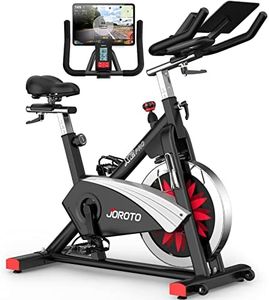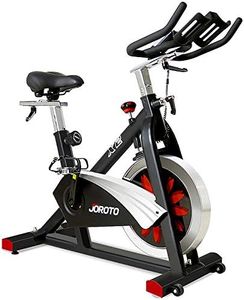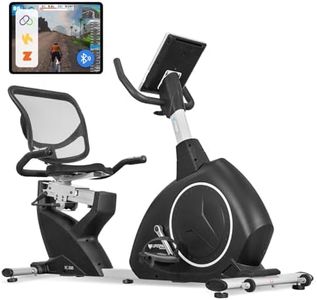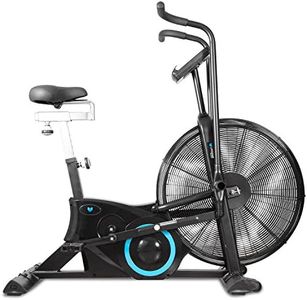We Use CookiesWe use cookies to enhance the security, performance,
functionality and for analytical and promotional activities. By continuing to browse this site you
are agreeing to our privacy policy
10 Best Home Exercise Bike
From leading brands and best sellers available on the web.Buying Guide for the Best Home Exercise Bike
Choosing the right home exercise bike comes down to understanding your fitness goals, available space, and comfort preferences. Whether you're aiming for intense workouts, steady cardio, or just gentle movement while watching TV, matching the bike's features to your habits makes all the difference. It’s important to pay attention to adjustability, resistance options, and ease of use, so you end up with a machine that encourages regular use, not one that collects dust.Bike Type (Upright, Recumbent, Spin/Indoor Cycling)The bike type refers to the general design and seating position. Upright bikes let you sit more like a regular bike and are good for versatile workouts. Recumbent bikes have a reclined seat, offering more back support and easier mounting, which is great for people with joint or mobility issues or those who want more comfort than intensity. Spin or indoor cycling bikes have a racing posture for high-intensity workouts and simulate outdoor cycling more closely. When picking a type, think about your comfort level, workout style, and any health considerations—if you want gentler exercise, a recumbent may suit you; if you want tough, immersive rides, go for a spin bike.
Resistance SystemResistance controls how hard it is to pedal. There are mainly three types: magnetic, friction, and air. Magnetic resistance is quiet, low-maintenance, and easy to adjust for different workout intensities, making it great for shared spaces or apartments. Friction resistance uses physical pads that rub against the flywheel and is often found on basic or spin bikes, but these may wear out quicker and can be noisier. Air resistance increases as you pedal harder and feels smooth, but can be loud. Pick magnetic if you want quiet, consistent workouts; friction for simplicity and cost, or air if you like variable, responsive resistance.
AdjustabilityAdjustability involves how easily you can change the seat height, handlebar position, and—in some cases—the distance from seat to pedals. Good adjustability helps you find a comfortable position that supports your posture and reduces the risk of strain, making your workouts safer and more enjoyable. Look for models that let you adjust for your height and leg length, especially if more than one person will use the bike. If you’re short or tall, check adjustment ranges to ensure a good fit.
Display and Tracking FeaturesMost exercise bikes offer a basic display or console that shows speed, distance, time, and sometimes heart rate. Some advanced displays can connect to fitness apps or virtual cycling programs. These help you track progress and can keep you motivated. If you’re goal-oriented or like to follow workout routines, look for clear, easy-to-read displays that track all the metrics you care about. If you don’t need lots of data, a simpler display will do the job.
Size and Space RequirementsBike size affects where you can use and store it. Larger bikes may offer more comfort or stability but take up more space, while compact or foldable bikes are great if you have limited room. Check the measurements and compare to your available area before buying. If portability is important, look for a lightweight design and wheels for easy movement. For stationary placement, size is less of an issue, but make sure you have enough room to get on and off safely.
Weight Capacity and StabilityWeight capacity is the maximum user weight a bike can safely support, and stability refers to how solid the bike feels during use. Heavier, wider frames usually feel more stable, especially during vigorous exercise. Always choose a bike with a weight capacity comfortably above your current weight to ensure safety and durability. If you plan high-intensity workouts or are on the heavier side, prioritize models known for strong, steady frames.
